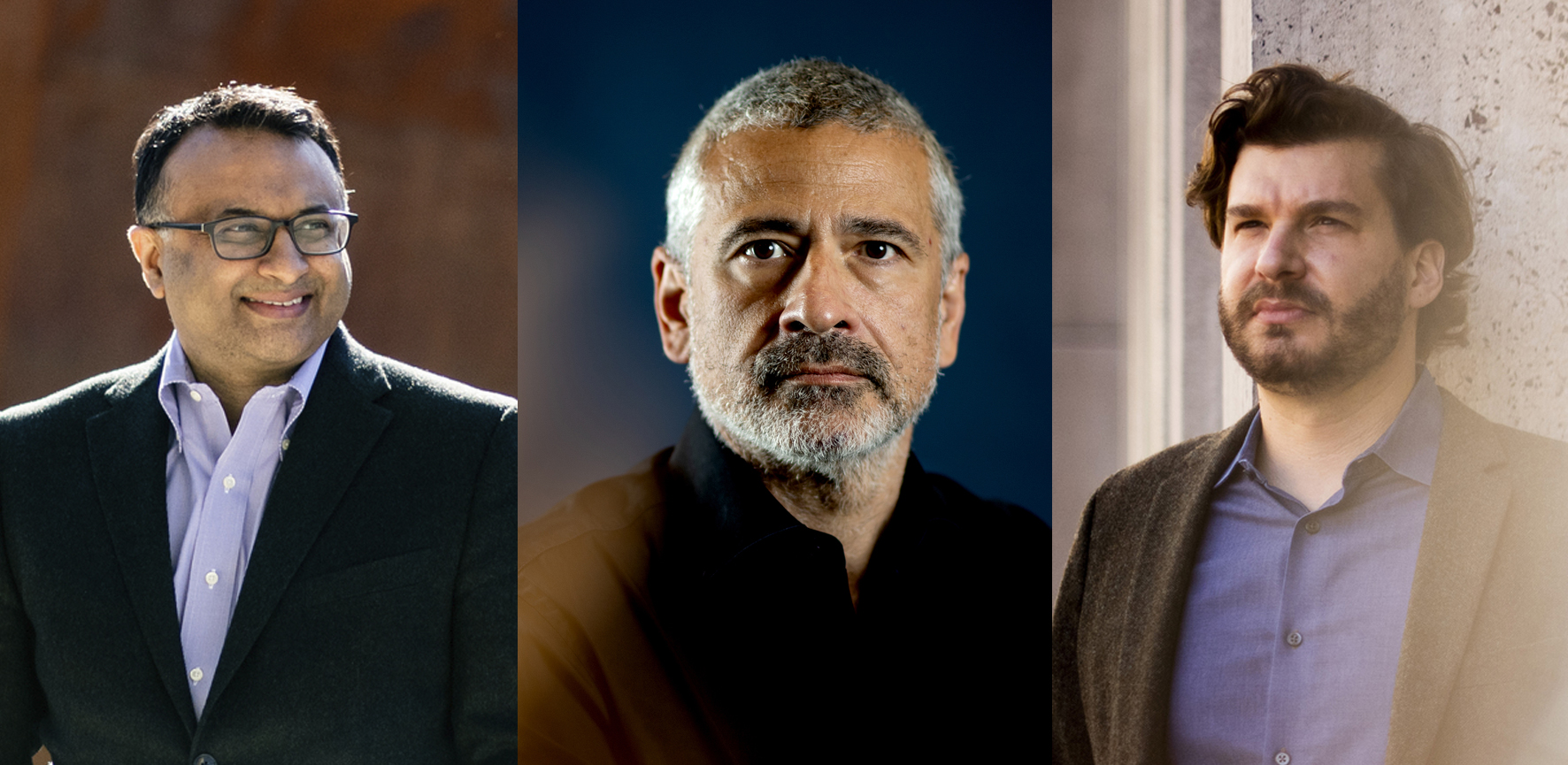When can we say that the COVID-19 pandemic is over?

It’s the question that has been on everyone’s mind since March 2020: When will the pandemic end?
For some, the concept evokes images of celebrations in the streets, hugging strangers, and a grand return to pre-pandemic concepts of normal for all. But, as we’re learning some 15 months later, there is not a sudden, clear “end date” to this traumatic pandemic that has claimed the lives of more than 3.8 million people worldwide, and counting.
Rather, the pandemic is likely to fade away from daily life as vaccination rates rise and COVID-19 cases continue to drop in response. But that won’t be a straightforward, uniform return to normalcy for everyone. How the final stretch of the pandemic feels will vary from person to person, and place to place. And it will hinge largely on two factors: vaccination rates and variants.
“There is no unique construct to when a pandemic ends,” says Alessandro Vespignani, Sternberg Family distinguished university professor of physics, computer science, and health sciences at Northeastern.
The prevailing idea among public health experts and epidemiologists is that SARS-CoV-2, the coronavirus that causes the COVID-19 disease, will never truly be eradicated.

“What will most likely happen is that we will go from this current pandemic-state to a state where the virus becomes endemic: It’s largely in the background, and we may see outbreaks in different areas from time to time, much like we think about the flu,” says Neil Maniar, professor of public health practice and associate chair of the Department of Health Sciences and director of the Master of Public Health program at Northeastern.
But that isn’t a guarantee. And even if COVID-19 outbreaks are largely relegated to the fall season, when respiratory illnesses typically see an uptick, there are worse scenarios.
Those scenarios—as well as more hopeful ones—have been outlined by a Northeastern team of infectious disease modelers led by Vespignani, who directs the Network Science Institute at Northeastern.
Since January, the group has been developing a set of predictive models to project the future of the COVID-19 pandemic in the U.S. in various scenarios in collaboration with the U.S. Centers for Disease Control and Prevention as part of a network of expert disease modeling teams across the country. Their results underpin policymakers’ decisions on when, how, and how quickly to lift pandemic restrictions.
The latest projections cover four possible scenarios over the course of the next six months that consider national vaccination rates and the possibility of a variant emerging with higher transmissibility. Both factors could contribute to future outbreaks.
“The virus is circulating and we will not hit 100 percent vaccination in the U.S., never mind the rest of the world,” Vespignani says. Still, according to the team’s models, any bump in cases could be quite small if vaccination rates climb and no variant with high transmissibility emerges.
“In the U.S., we have a good outlook,” particularly for the summer, Vespignani says. But, “a pandemic is not over until it’s over globally.”
He is, of course, referring to the definition of a pandemic: An epidemic that is not contained to one place and crosses international borders. It is, by definition, a global issue.
It goes beyond terminology. Outbreaks from one part of the world spread to other parts of the world, as we’ve seen over and over, Vespignani says.
That happened with the B.1.1.7. variant, which was first identified in the United Kingdom, which led to a significant rise in cases earlier this year in the U.S. and around the globe just as vaccinations were getting underway. And now the strain first identified in India that is now known as the Delta variant has been identified in more than 60 countries.
“So now we enter another stage in which we don’t have just to think about our internal borders but we need to start helping the world,” Vespignani says. “There are billions of people that need to be vaccinated that are potentially at risk.”
The worst-case scenario would be if a variant of the virus emerged that could escape the protections of the vaccines, Vespignani says. The CDC-approved vaccines seem to be quite effective in protecting against the known variants, but if outbreaks continue around the globe, the virus will continue to mutate and more variants will emerge.
That’s actually what happened with the 1918 influenza pandemic, says Samuel Scarpino, assistant professor in the Network Science Institute at Northeastern, where he directs the Emergent Epidemics Lab. It became part of the seasonal flu season. And, he says, the reason that seasonal flu persists is because it evolves resistance to antibodies both provided by vaccines and in the human body after surviving an infection—much like Vespignani’s concern about future variants of SARS-CoV-2 if the worldwide population does not get vaccinated quickly enough to eradicate the virus.
“Vaccination of the low- and middle-income countries is the most altruistic thought and at the same time, the most selfish,” Vespignani says. “Because we have to protect those populations so that we can protect us.”
Thinking globally is not just about the threat of more dangerous variants, Scarpino says. In the past, when vaccination efforts have eliminated diseases from some countries but not others, the disease has later been imported back into those countries into communities with larger populations unvaccinated against that disease.
With the COVID-19 pandemic, vaccination rates vary greatly around the world as well as within nations and states. In the U.S., 54 percent of adults have been fully vaccinated. In Vermont, 73 percent of adults have had all their shots, but in Mississippi, only 36 percent of adults are fully vaccinated.
Even in states that have high vaccination rates, like Massachusetts, there are some communities in which only slightly more than a third of residents have been vaccinated. And, as a recent Washington Post analysis found, while cases have dropped significantly in places where vaccination rates are high, in both states and municipalities where vaccination rates have remained low, infections are on the rise.
Between outdoor activity and rising vaccination rates, “the summer in the U.S. should finally be a good summer,” Vespignani says, according to his team’s projections. But the fall may see an uptick in cases, he says, as children return to school and the autumn heralds respiratory illness season. Shots have yet to be approved for children under the age of 12 in the U.S., and there is the risk of more transmissible variants.
“We need to monitor the virus,” he says. “We will have to be very vigilant.”
While some people will be celebrating the summer’s return to normalcy wholeheartedly, for others the pandemic will likely linger in ways other than just the risk of illness, Maniar says.
“I think this idea of what emerging from the pandemic will mean really will vary from one individual to the next because our experience through the pandemic was very different from one person to the next,” he says.
“This pandemic has taken a profound toll on so many in so many different ways, whether it is the mental health toll, the social isolation, the loss of loved ones, financial hardship, all of that. And I think that also feeds into what folks decide they want to continue to do, even if we were to say the pandemic was over,” Maniar says. “There’s a lot that people are dealing with and they will continue to deal with.”
For media inquiries, please contact media@northeastern.edu.





